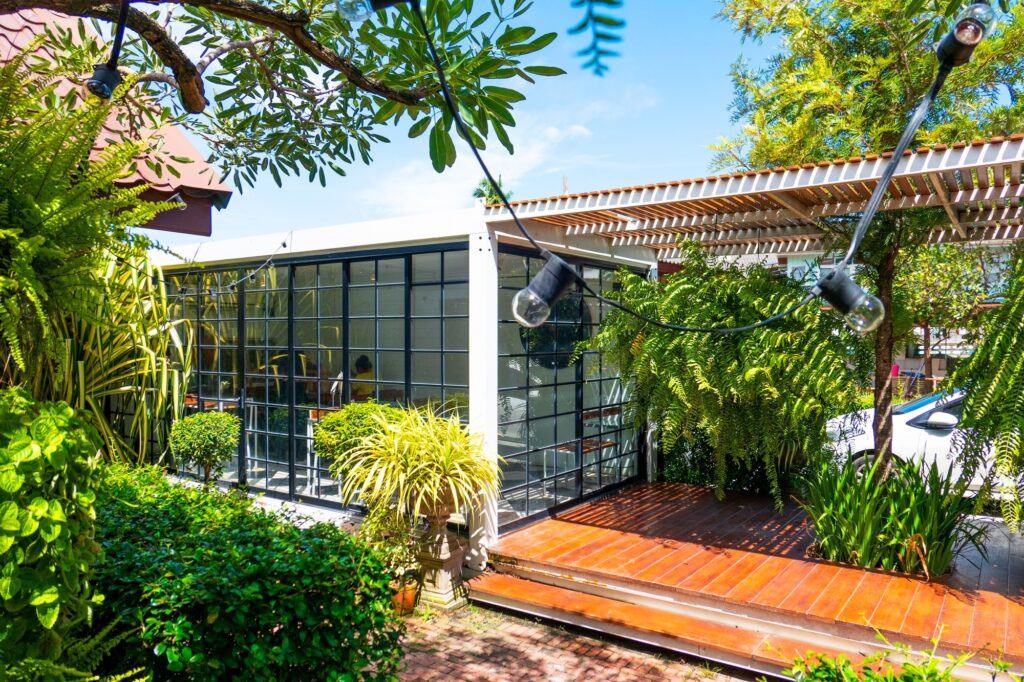
Have you ever thought of converting a shipping container into a tiny house? Well, like most others, I am intrigued by container homes because they are virtually low maintenance and they require very little in the way of building materials compared to a traditional house. If a person can build a house from scratch, then why not use a shipping container as a tiny home?
Sure there are benefits of container homes but there are also downsides that you might not be familiar with, especially with used and one-time containers. So that begs the question, are shipping container homes safe to live in?
A shipping container is coated with corrosion-resistant paint and pesticides to withstand rough sea conditions. Structurally, they are built with Corten steel for optimum strength and durability, making them safe to live in if the harmful chemicals are stripped or sealed.
Besides, they have a better chance of surviving the wrath of mother nature compared to traditional house structures.
So let’s take a look at some concerns regarding shipping container homes and how they can be improved to make them safer for inhabitants.
Table of Contents
Is it Safe to Live in Containers Treated With Chemicals?
When it comes to the safety of living in a container home, the flooring is one of the most important aspects to consider. The container flooring is generally manufactured with marine-grade hardwoods and heavily treated with chemicals to prevent pest infestation. That said, they are more susceptible to volatile organic compounds (VOCs) which can off-gas for a long time. The timber treatment information of the chemical used can be found in the container data sheet located on the container door.
On top of that, fumigants and contact insecticides are used during transportation to preserve the quality of goods throughout the journey.
Not to forget off-gassing from the new products in the sealed container. These various spectrums of chemicals like phosphine and chromate can accumulate in the wood and cause different health problems in the future.
Although the container data plate provides the type of chemical used to treat the wood floor, you can’t be too sure to say it is safe even for a one-time container.
What about the paint used on the corrugated steel panels?
The marine paint used is lead-based to increase durability and is highly resistant to water and moisture. Over the years, although lead content in marine paint has reduced significantly, it is still way above the approved levels of household paints (lead concentration not exceeding 0.009% according to U.S. Consumer Product Safety Commission).
So trust me, you wouldn’t want to live in a home that off-gasses so many different toxic chemicals.
Is the Container Structure Safe for Living?
General-purpose shipping container structures are made of Corten alloys beams cast together at its corners for great strength and stability which allows them to be stacked one on top of the other. The corrugated steel sheets for its walls are also designed not to warp, bend or break under the weight of the stacked container.
They can hold up to 29 tons for a 40-ft container and this makes them perfect for a good shelter. But if you are thinking of building a container home, you would probably join a multiple containers module together to create a larger space for your basic needs.
Or at the very least, make minor modifications to a decent living cabin with electrical, plumbing, window and doors etc. Modular construction is a very good option if you are looking for a home that can grow with you. However, these additions and alterations may compromise the structure of the containers if not reinforced properly.
You’ve got to be wary if you choose to cross-stack or stack containers in a way that the load bearing is not on its corner posts. The corner posts are essentially the four corners of the container that can support up to 8-10 fully loaded containers. So, make sure to include additional steel beams or joists to support the weight of another module for your container home.
As for the roof, it is also tested to be weather-resistant to rain or snow (although it can get pretty loud when it hits on the bare container roof). The roof can hold 660lbs per 2 square feet without permanent deformation even at the weakest point. But I would want to reinforce my roof from a fallen tree branch in case it ever happens. You might also want to check out our post on Roofing Ideas for your container homes to prevent water ponding and rust.
Otherwise, the structural integrity will be a good shield to protect you just as a traditional house would, even better, during a seismic event or a very strong windy night.
Can Container Homes Survive an Earthquake or a Hurricane?

Did you happen to live in areas with possible natural disaster occurrences? You must be thinking if a container home can hold up against strong earthquakes or powerful hurricanes. Well, actually, the design of a shipping container undergoes a series of ISO tests, and it is tested for vibration, rigidity (transverse), and weather resistance.
Take the rigidity test, for example, 150kN of force is applied to the top of the container with the bottom restraint both laterally and vertically. The container should show no signs of permanent deformation. This is approximately 150 mph of wind speed it is able to withstand if the foundation is properly secured. There are various ways to secure your container homes and it is best to discuss this with your contractor beforehand.
Now, the shipping containers are less likely to collapse even if it is was excited to its natural resonance frequency. It is built to withstand and tested with the actual conditions on board the ship. Although it is not fail-proof but it stands the best chance of surviving compared to a traditional structure.
In fact, container homes are engineered to withstand any physical challenges you may encounter. Sure it may leave a dent or two but that is easily repairable.
The best part? These homes are energy-efficient and cost-effective to build. That is if you check out these building plans for your container homes.
Key Takeaway
Shipping container homes can be a good option for an alternate living space on your homestead because of its low cost and quick build time. They are already built out of strong materials and can be easily stacked in rows to make a small, compact house that is easy to heat and cool.
By relying on these modern, purpose-built homes, you can achieve a homely environment with all the convenience of a traditional home.
You can use them for sheds, houses, or any other project you can think of. There are so many different ways to build container house and people who have built them feel they are very rewarding projects.
While I believe shipping container homes can be a viable alternative to building a regular wood-framed home, it might not be for everyone and there are always better options for certain situations.
If you have other questions about this topic, please leave a comment below!

